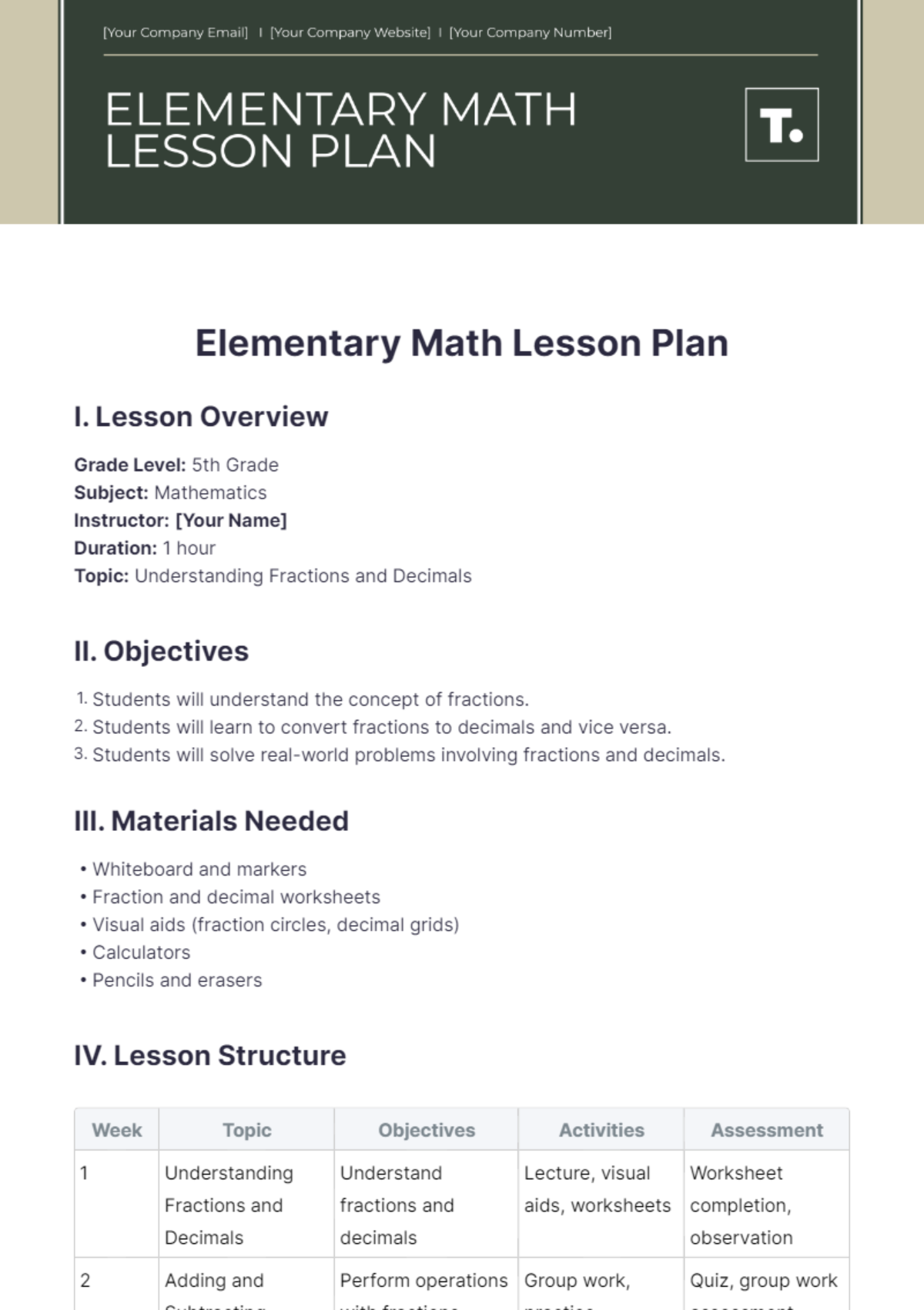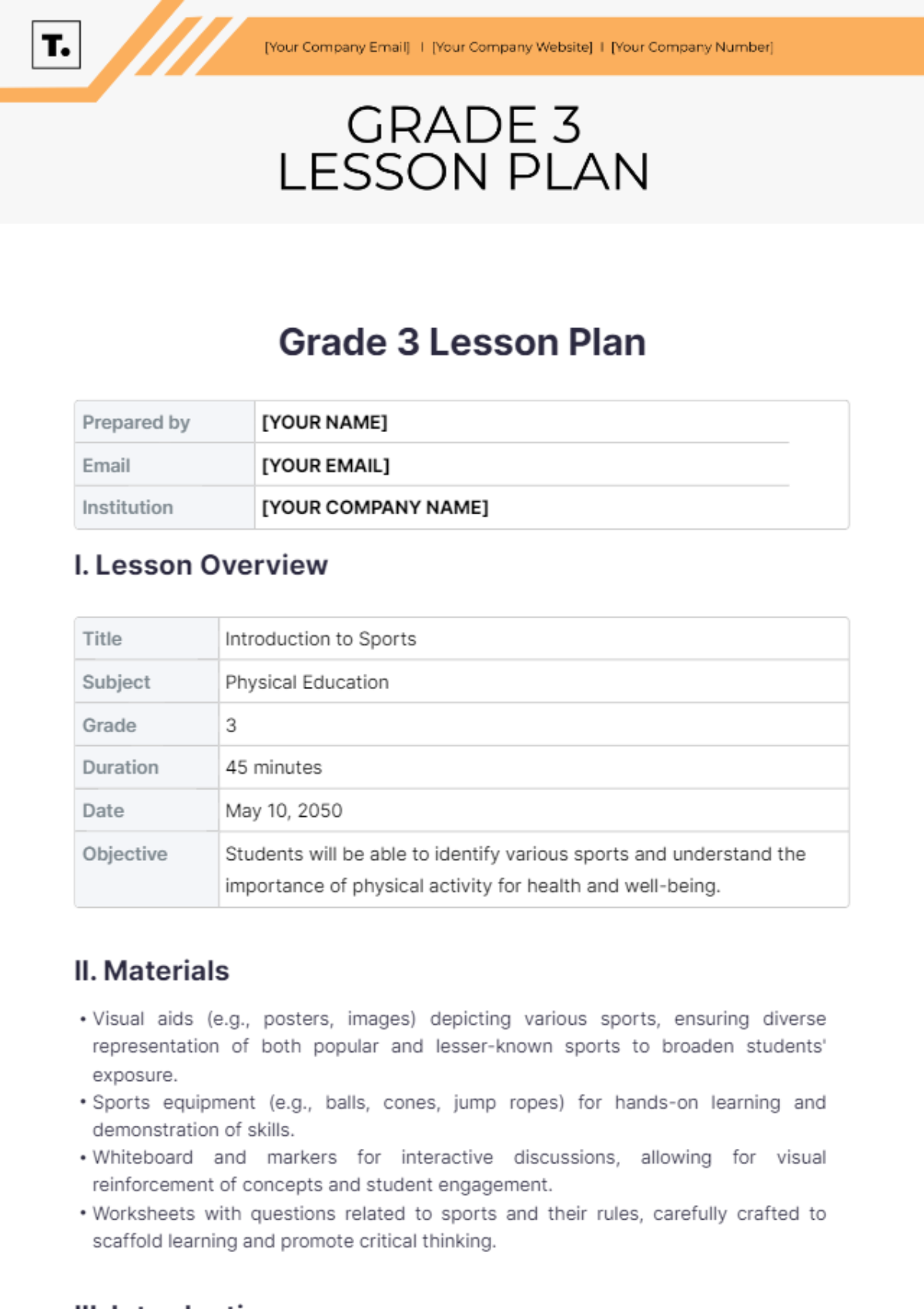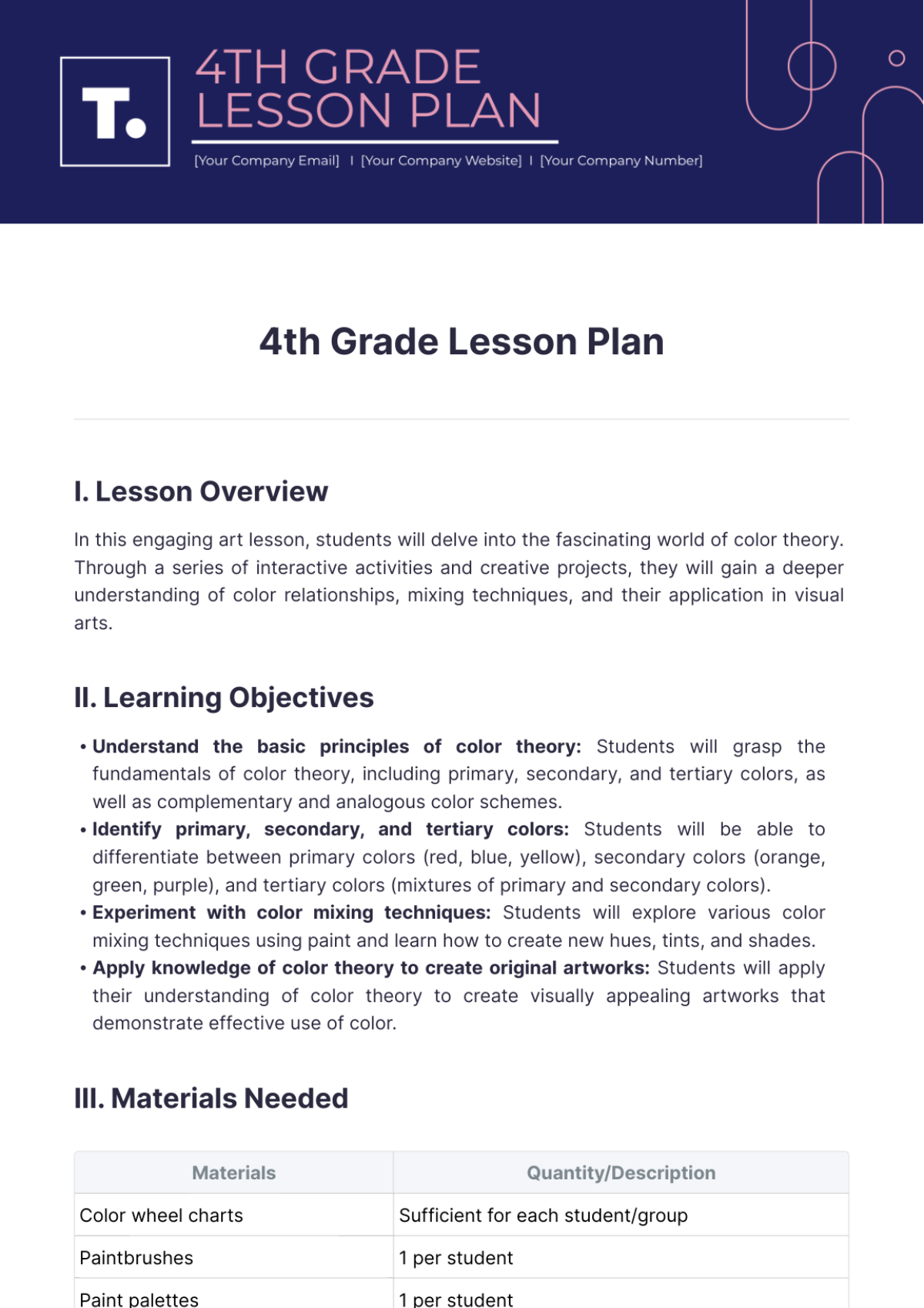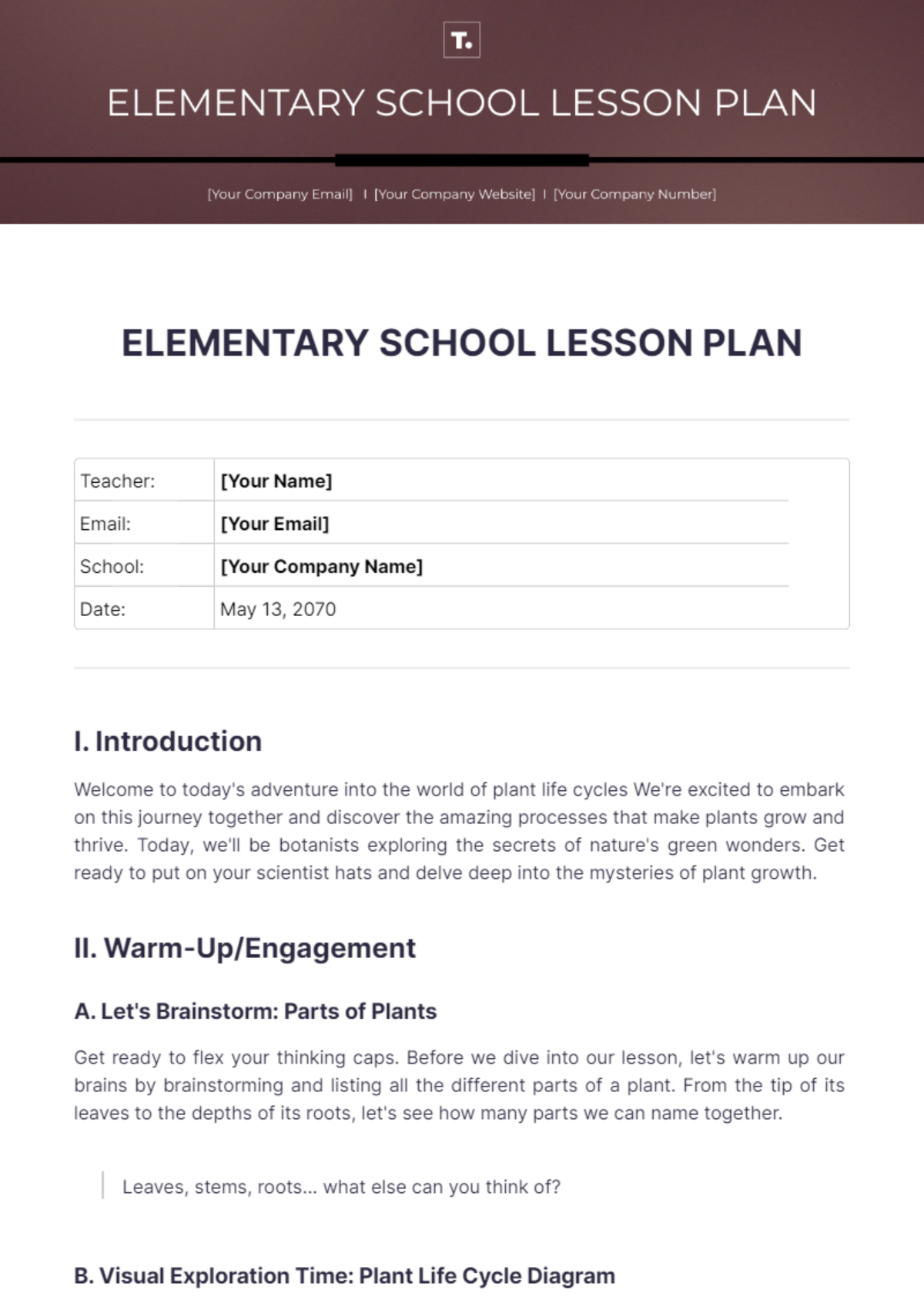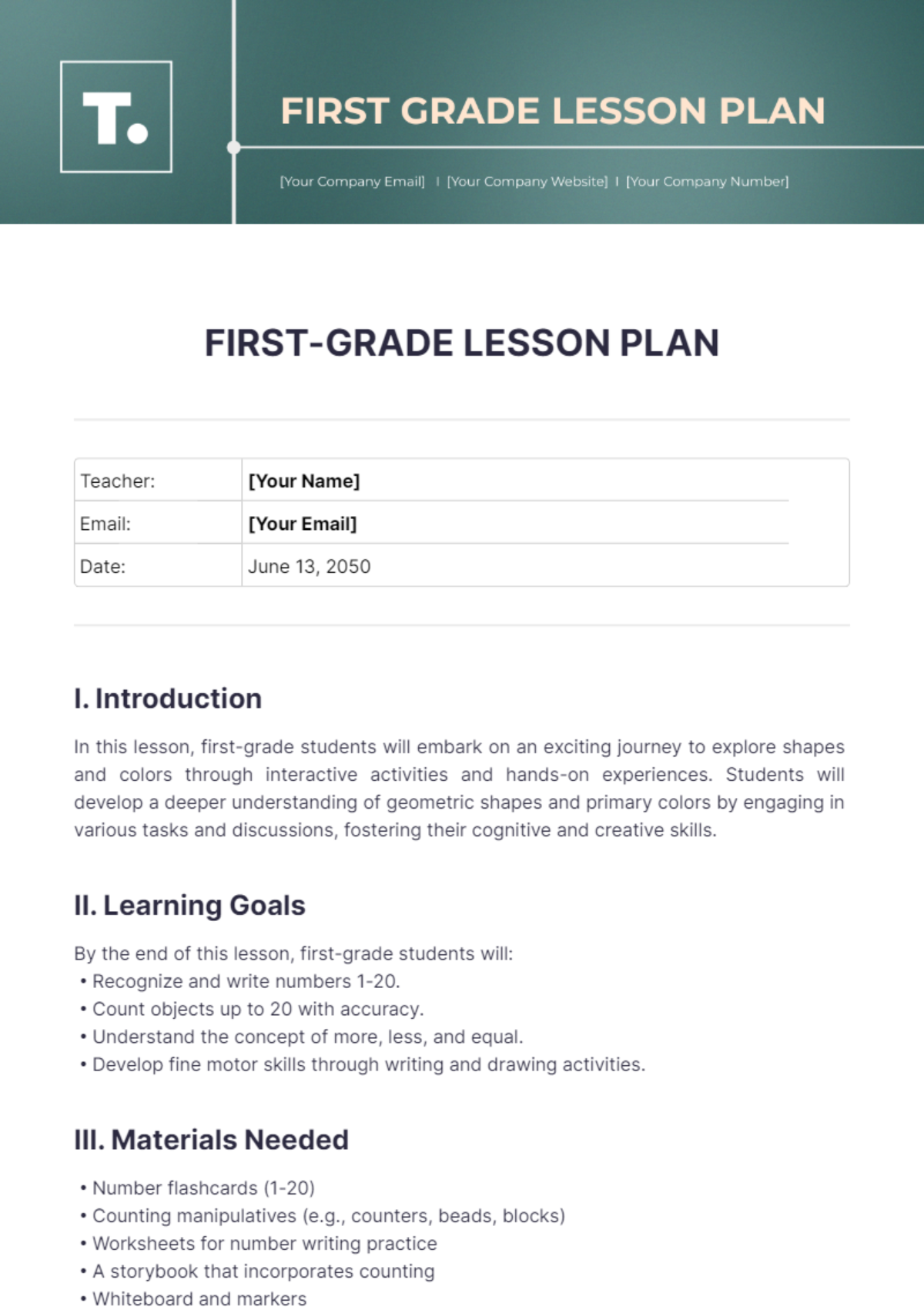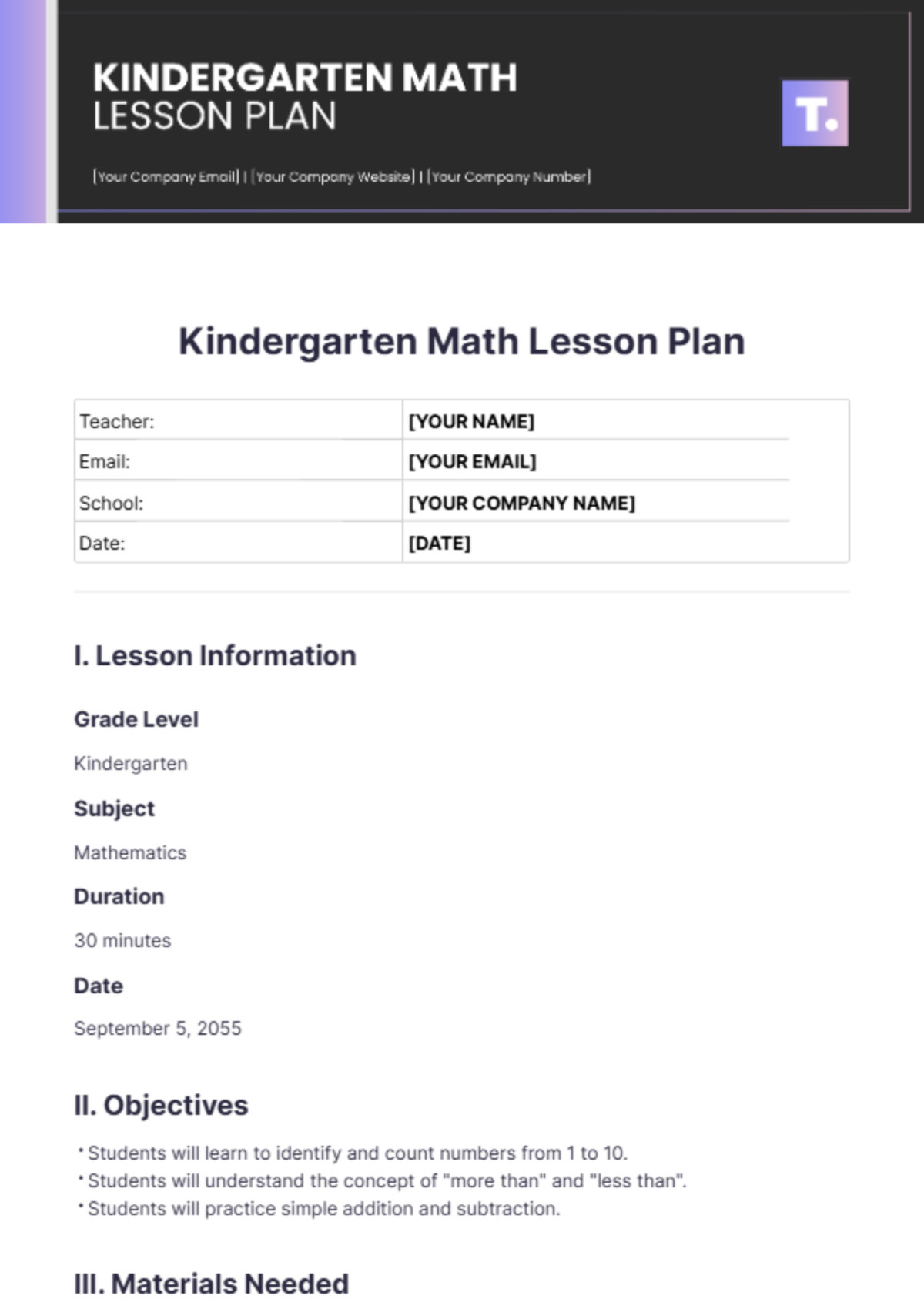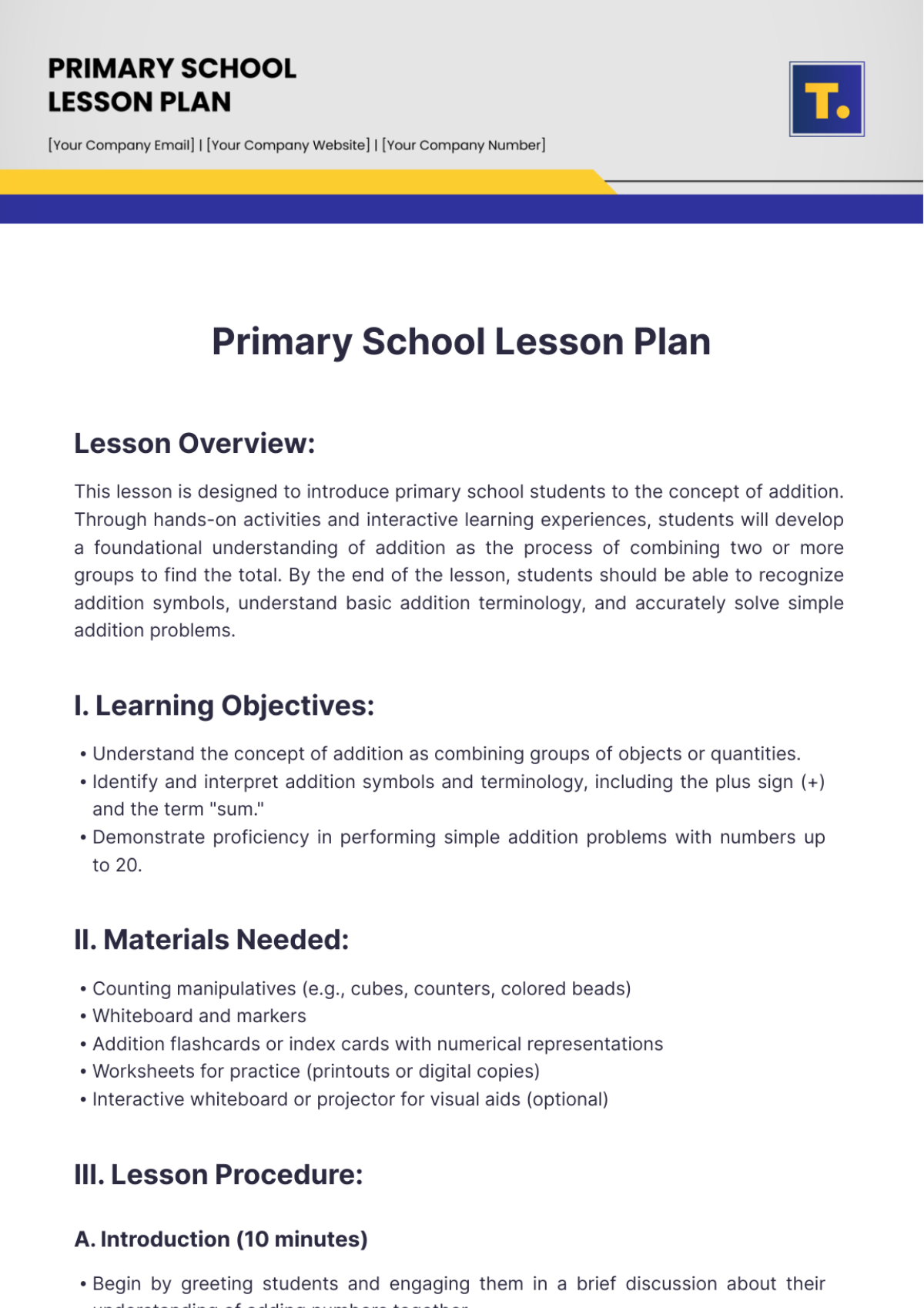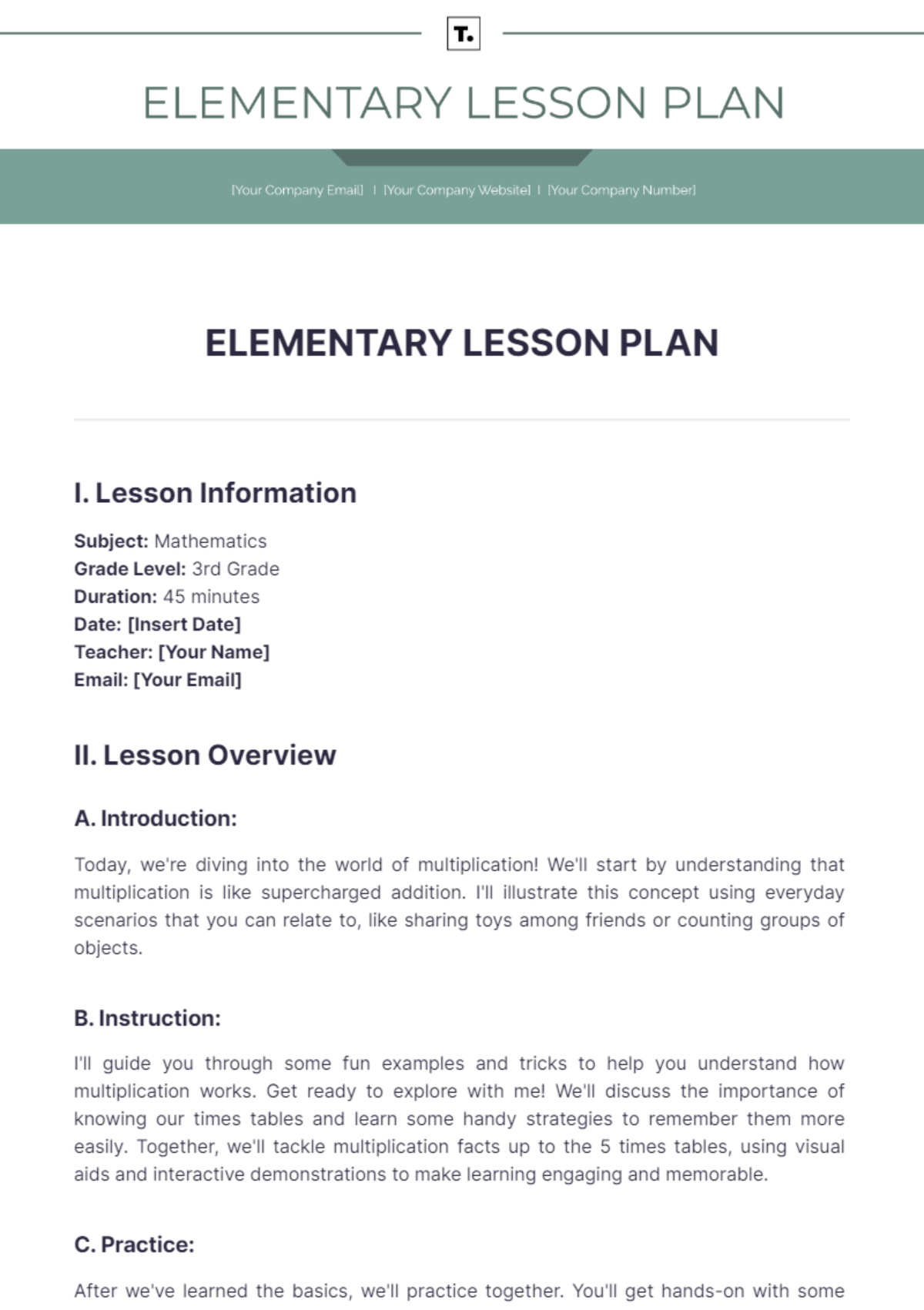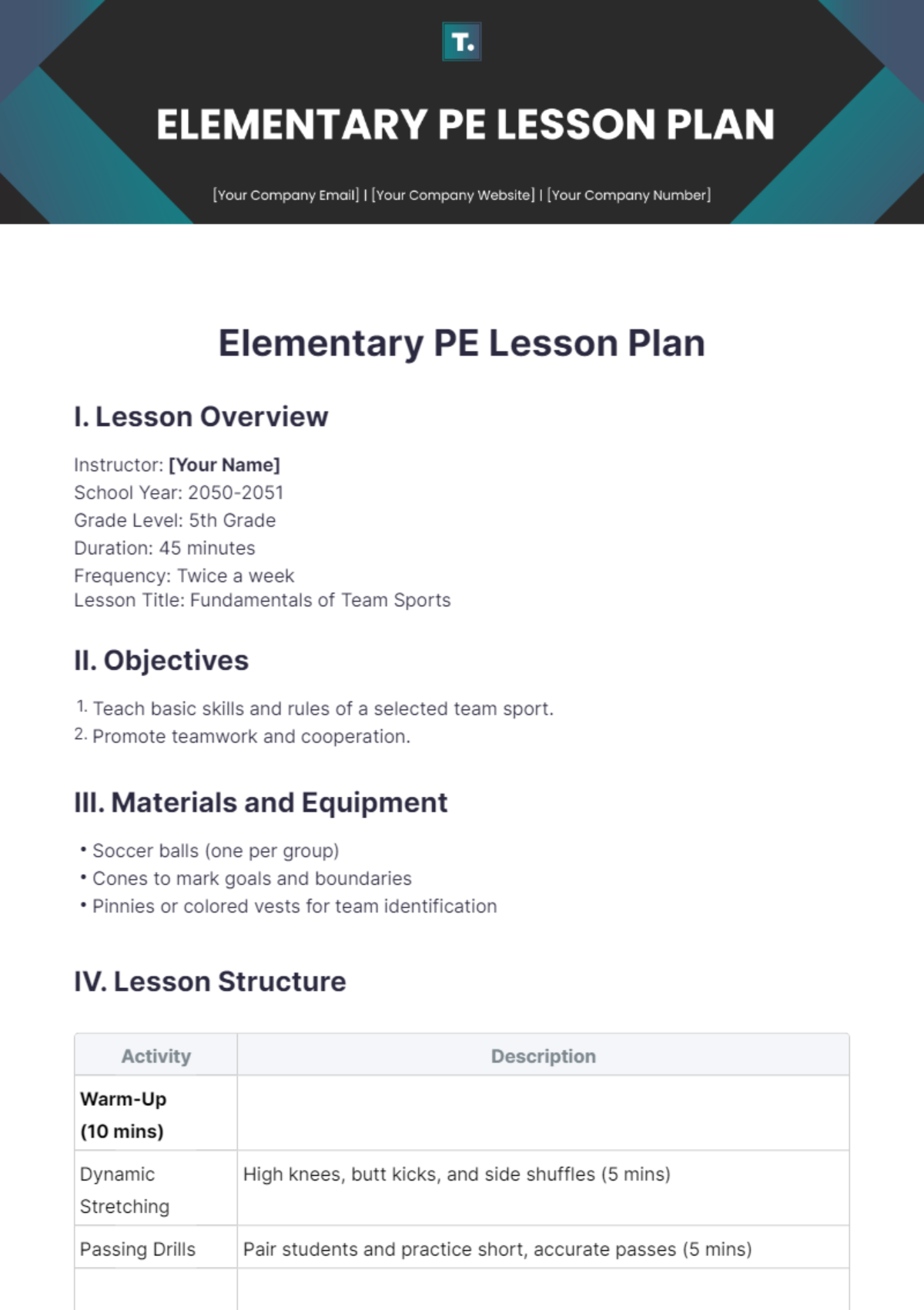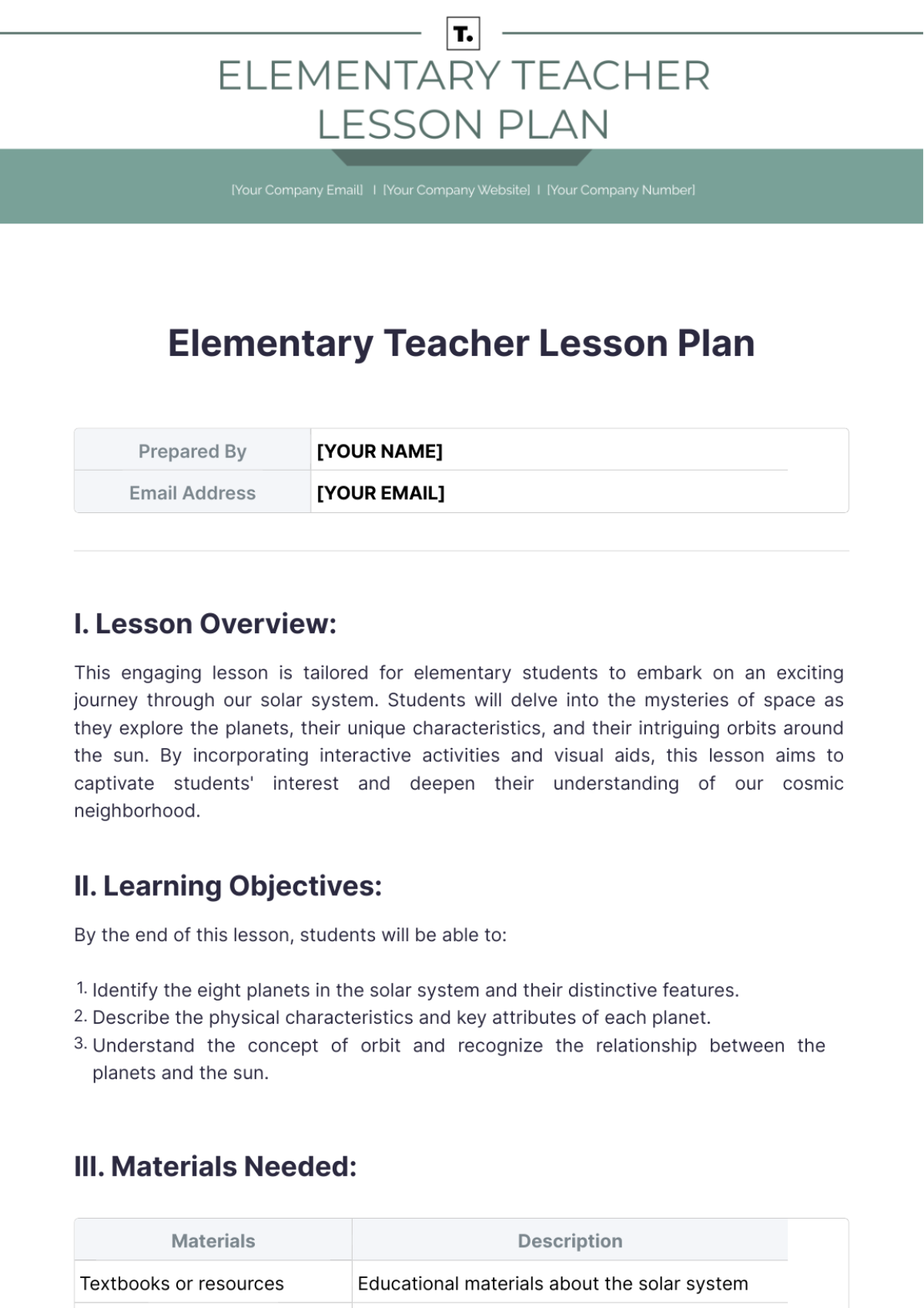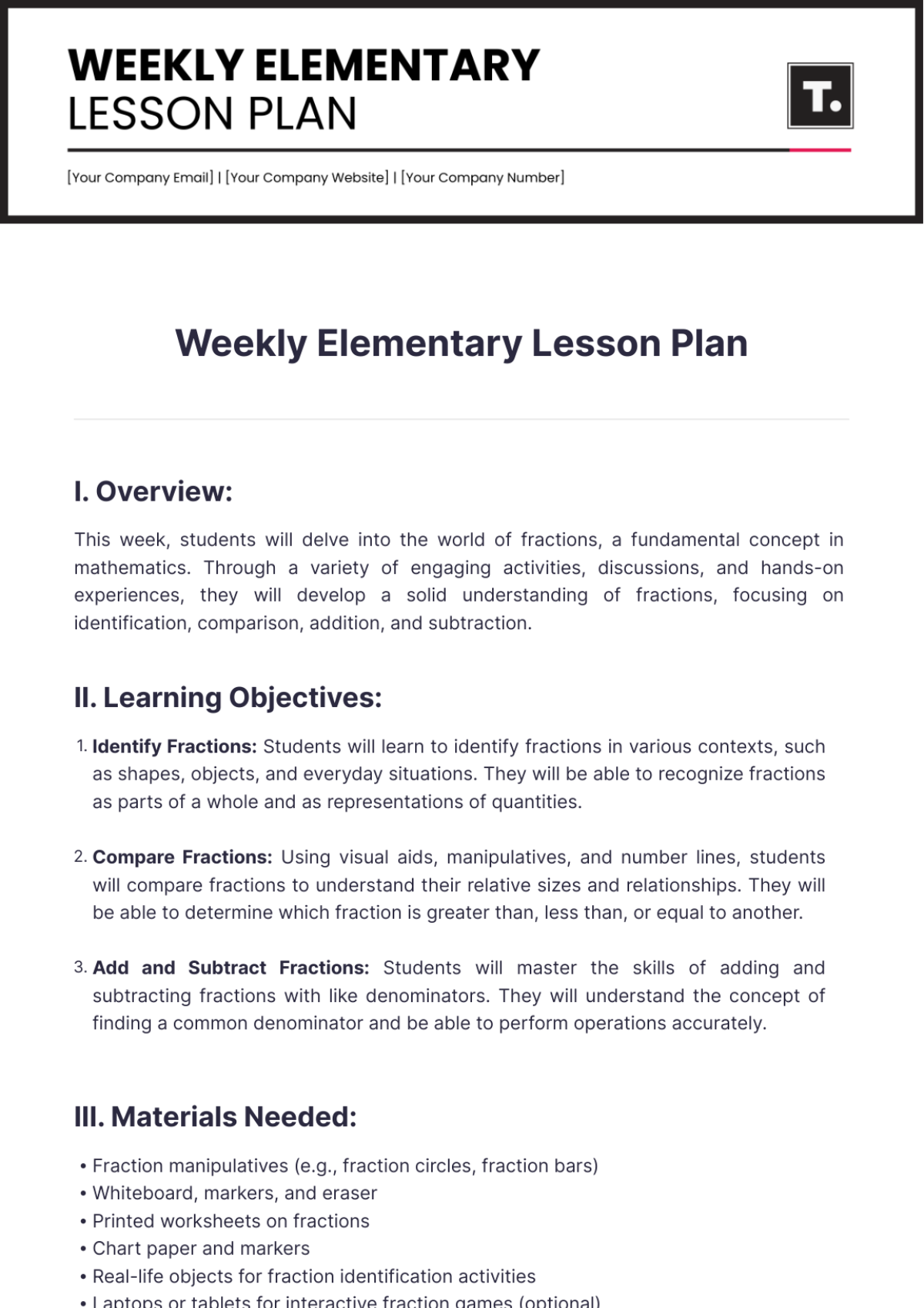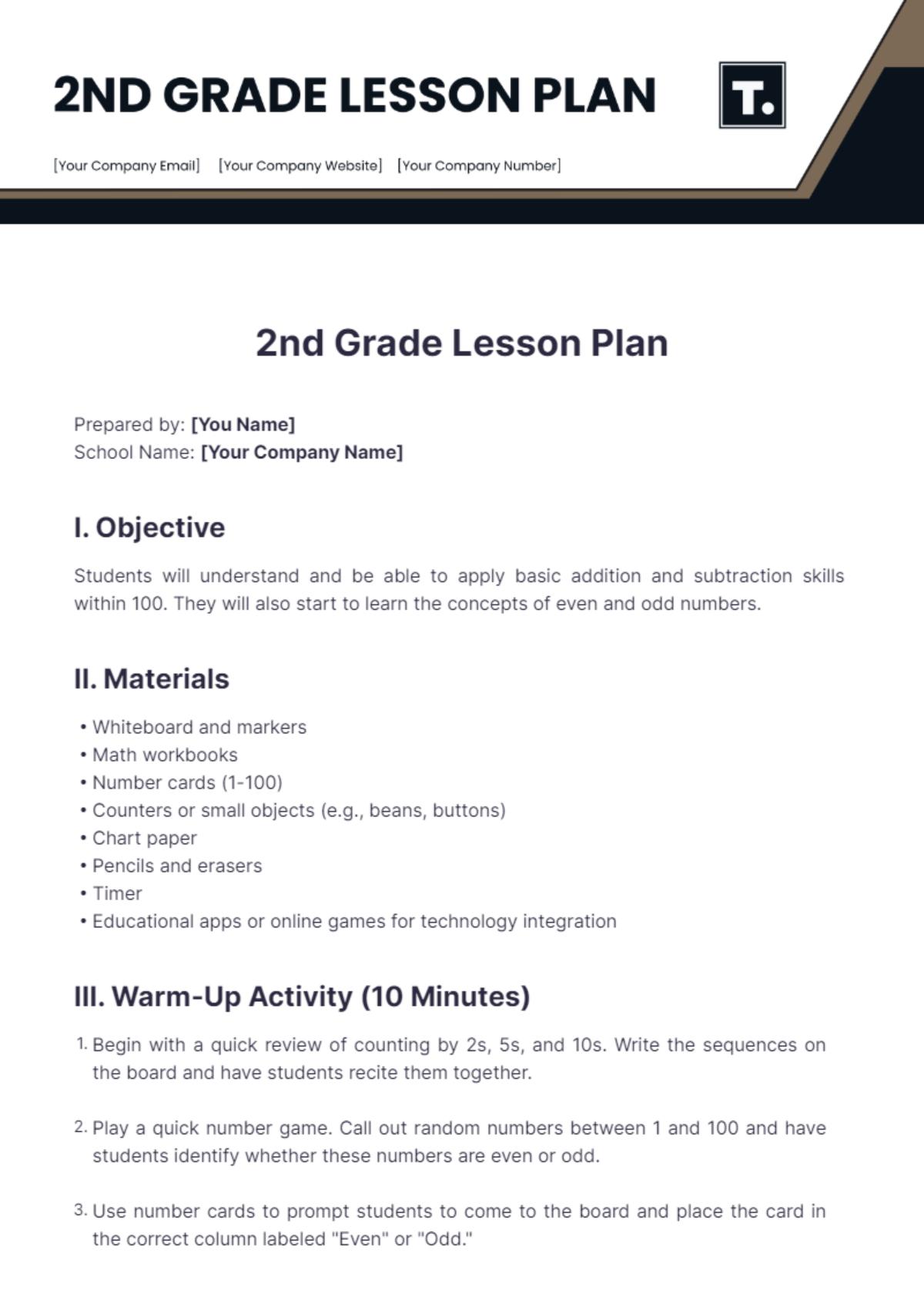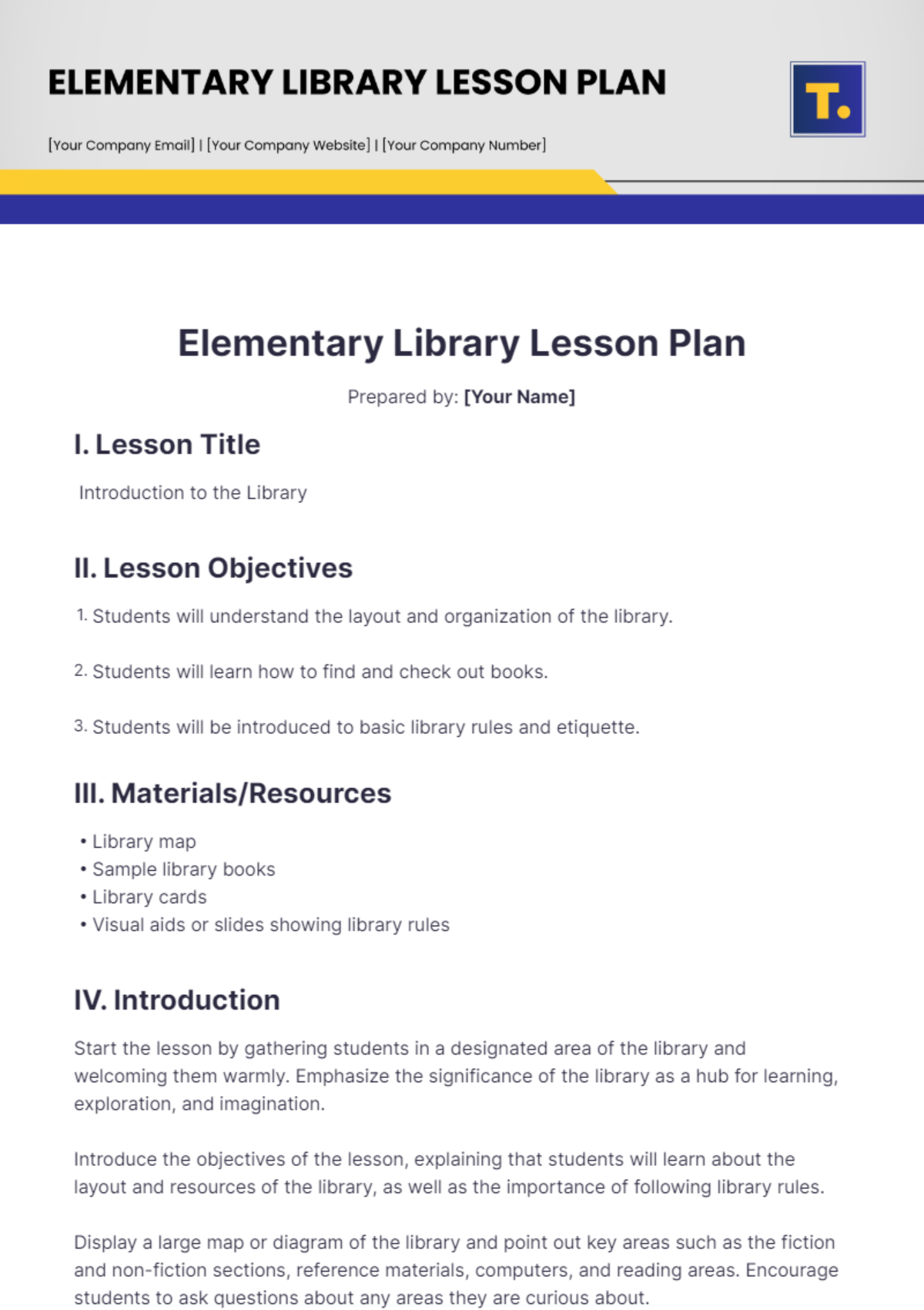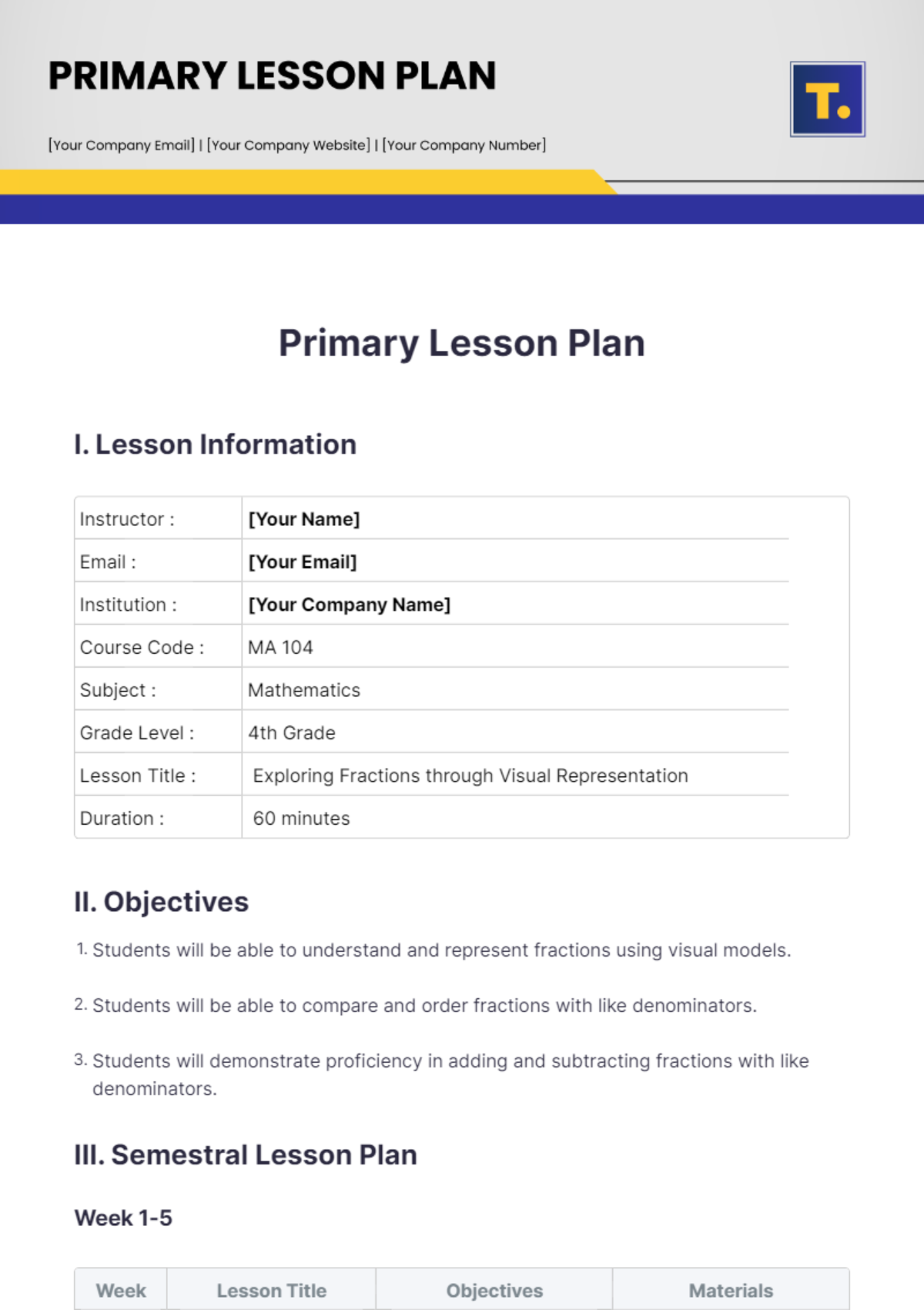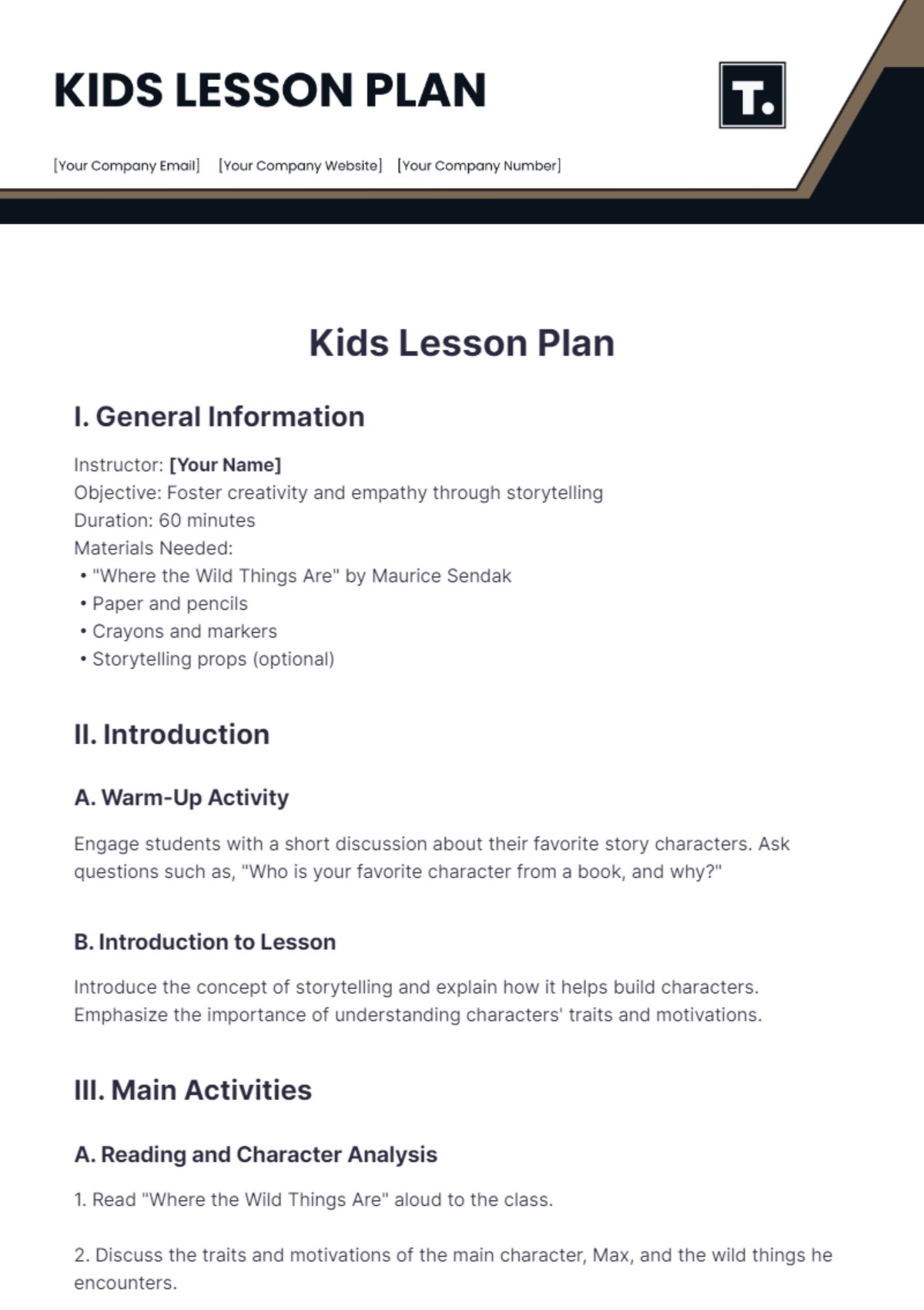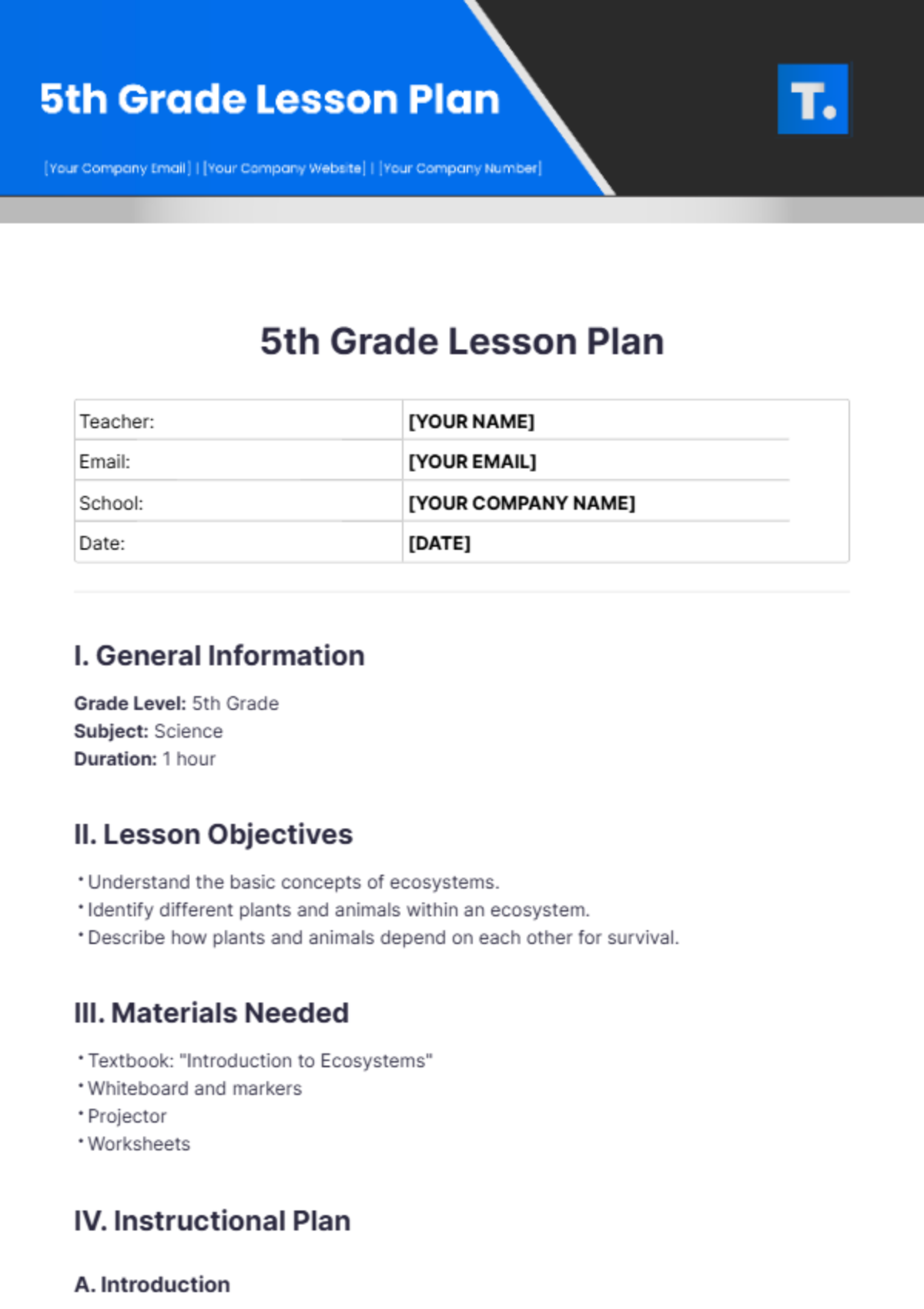Elementary PE Lesson Plan
I. Lesson Overview
Instructor: [Your Name]
School Year: 2050-2051
Grade Level: 5th Grade
Duration: 45 minutes
Frequency: Twice a week
Lesson Title: Fundamentals of Team Sports
II. Objectives
Teach basic skills and rules of a selected team sport.
Promote teamwork and cooperation.
III. Materials and Equipment
Soccer balls (one per group)
Cones to mark goals and boundaries
Pinnies or colored vests for team identification
IV. Lesson Structure
Activity | Description |
|---|---|
Warm-Up | |
Dynamic Stretching | High knees, butt kicks, and side shuffles (5 mins) |
Passing Drills | Pair students and practice short, accurate passes (5 mins) |
Main Activity (25 mins) | |
Skill Development | |
Dribbling | Demonstrate and practice dribbling techniques (3 mins) |
Passing | Teach different types of passes (inside foot, outside foot) (3 mins) |
Shooting | Practice aiming and shooting at goals (4 mins) |
Mini Game | |
Team Formation | Divide students into small teams and assign pinnies (2 mins) |
Game Play | Play a short game, focusing on applying the skills learned. Emphasize teamwork and communication. Stop play to correct techniques as needed. (13 mins) |
Cool-Down | |
Static Stretching | Focus on legs and arms to relax muscles after activity (5 mins) |
V. Assessment
Assessment during this lesson involves both observation and interaction. During the skill development segment, observe students' abilities to perform dribbling, passing, and shooting techniques. Take notes on their proficiency and identify areas where individual students may need additional practice or instruction. During the mini game, assess students on their ability to apply these skills in a game context, as well as their understanding of the basic rules of soccer.
Additionally, observe how students work within their teams, looking for evidence of effective communication, cooperation, and sportsmanship. At the end of the lesson, engage students in a brief discussion or Q&A to gauge their understanding of the rules and objectives of the game.
VI. Adaptations for Diverse Learners
To accommodate diverse learners, consider various adaptations. For students with physical disabilities, provide modified soccer balls and goals, and adjust the rules to ensure inclusivity, such as allowing additional touches or using a larger, lighter ball. For students with cognitive disabilities, offer clear, step-by-step instructions and use visual aids or demonstrations to reinforce learning. Use simplified language and repeat instructions as needed.
For advanced learners, introduce more challenging drills and encourage them to take on leadership roles within their teams, such as leading warm-up exercises or strategizing during the mini game. Providing these differentiated instructions ensures that all students can participate meaningfully and benefit from the lesson.
VII. Safety Considerations
Equipment Inspection: Before each class, thoroughly inspect all equipment, including jump ropes, cones, and balls, to ensure they are in good condition and free from any defects or damage that could pose a safety hazard.
Clean and Clear Environment: Maintain a clean and clutter-free environment in the gym or designated activity area to minimize the risk of slips, trips, and falls. Remove any obstacles or hazards from the floor, such as water spills or stray equipment.
Appropriate Footwear: Emphasize the importance of wearing appropriate footwear, such as sneakers or athletic shoes, during physical activities to provide support and reduce the risk of foot and ankle injuries.
Supervision and Instruction: Provide clear instructions and demonstrate proper techniques for each activity to ensure students understand how to perform exercises safely. Supervise students closely during activities to prevent accidents and intervene promptly if any unsafe behavior is observed.
Proper Technique Emphasis: Emphasize the importance of using proper technique and form during exercises to prevent strain and injury. Provide individualized feedback and corrections as needed to help students perform movements correctly.
Modifications for Safety: Be prepared to modify activities or exercises to accommodate students with injuries, physical limitations, or special needs to ensure their safety and inclusion in class activities.
